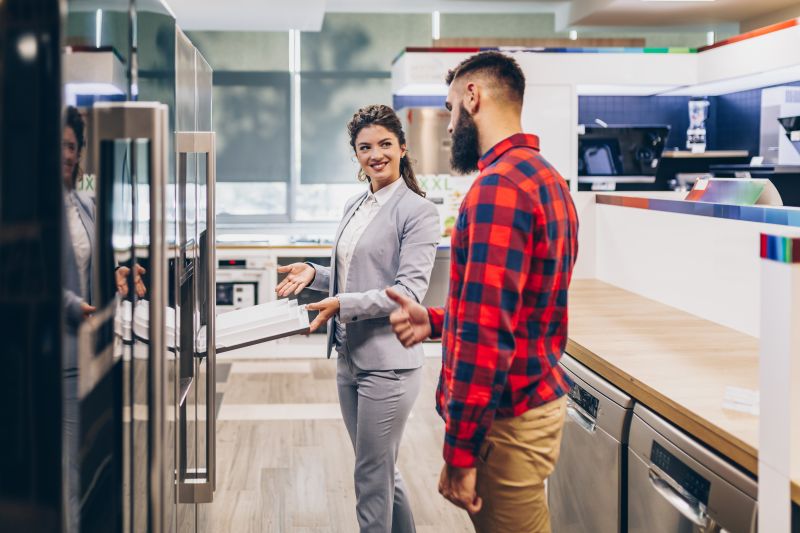Supermarket Equipment Guide: How to Choose, Maintain, and Optimize Your Store’s Tools
Opening a supermarket is more than putting products on the shelves. The fate of your store relies significantly on having the proper equipment in place — equipment that makes the operations run smoothly, improves the customer experience, and increases sales. Whether you’re opening a local grocery store or expanding to a full-fledged supermarket, this ultimate guide will take you through everything you need to establish your store for success.
Table of Contents
Why the Right Equipment Is Important
Equipment in supermarkets has a direct effect on:
- Operational Efficiency: Quicker checkout, well-organized stock, and reduced manual labor.
- Customer Satisfaction: Clean, well-lit displays and smooth shopping experiences.
- Product Preservation: Storage ensures freshness, particularly for perishables.
- Brand Image: Quality equipment reflects professionalism and generates trust.
1. Display Shelving and Racks
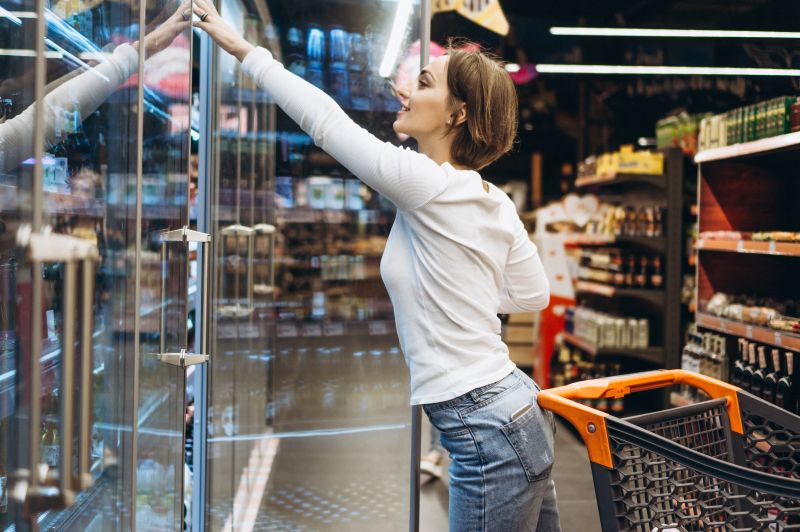
Purpose:
To display products in an efficient and attractive manner.
Types:
- Gondola Shelving: Perfect for middle aisles.
- Wall Shelves: For perimeter walls.
- End Cap Displays: High-traffic promotion areas.
- Wire Baskets & Dump Bins: Excellent for bulk or sale items.
Tip: Opt for adjustable shelves for different product sizes and types.
2. Refrigeration Units
Purpose:
To display and store perishable items like dairy, meat, and frozen food.
Must-Have Units:
- Open Chillers: For beverages, dairy, and ready-to-eat food.
- Glass-Door Freezers: For frozen vegetables, meats, and desserts.
- Under-Counter Coolers: For specialty or small sections.
Tip: Purchase energy-efficient models to reduce electricity bills in the long run.
3. Checkout Counters and POS Systems
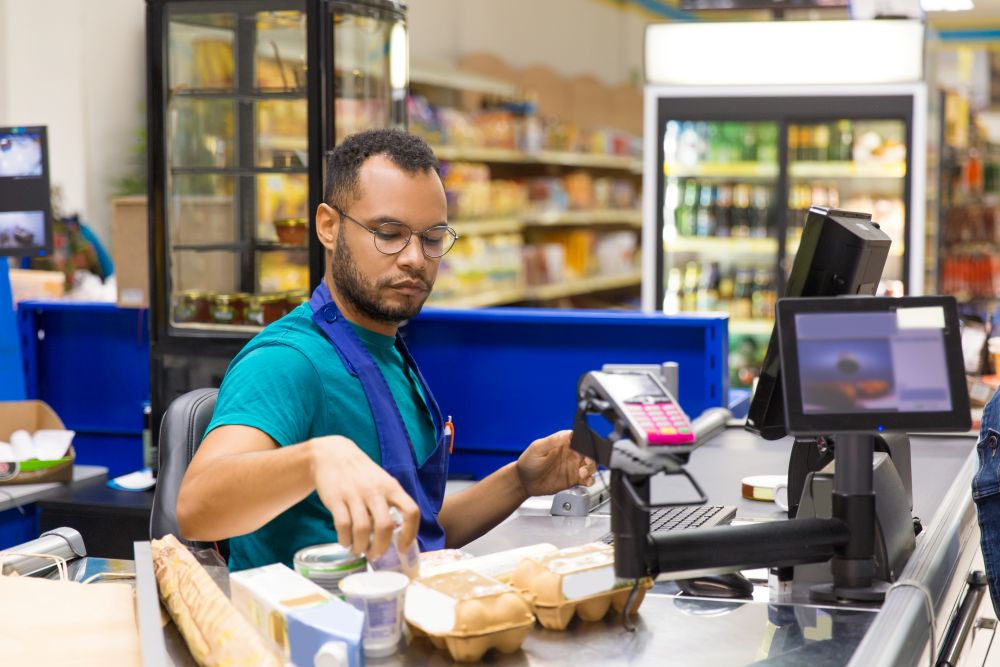
Purpose:
To enable a smooth billing experience and maintain transactions smooth and efficient.
Equipment Checklist:
- Checkout Counters with Conveyor Belts
- Barcode Scanners
- Receipt Printers
- Cash Drawers
- POS Software System
Pro Tip: Select a POS system that allows inventory management, sales analysis, and customer loyalty programs.
4. Storage & Backroom Equipment
Behind the scenes is equally as important. Adequate storage means inventory is safe, accessible, and organized.
Key Equipment:
- Heavy-Duty Racks
- Pallets and Trolleys
- Cold Storage Rooms
- Inventory Management Tools
Efficiency Hack: Utilize color-coded bins or labels to make stock identification easier.
5. Trolleys, Baskets, and Carts
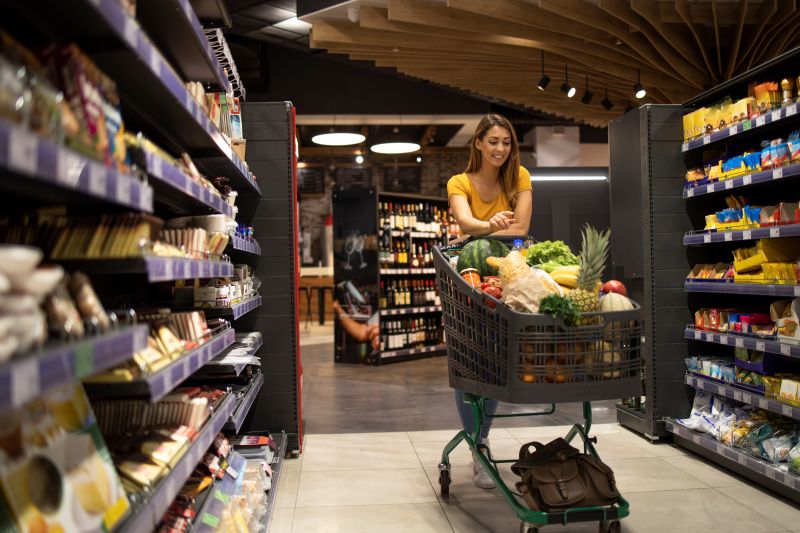
Purpose:
To assist customers in making the shopping experience easier and more enjoyable.
- Shopping Trolleys – For big-ticket purchases.
- Hand Baskets – For casual, light shopping.
Child-Friendly Carts – A considerate touch for families.
Tip: Regular maintenance and sanitation of carts for hygiene and safety.
6. Security and Surveillance Systems
Loss prevention is essential. Surveillance also aids in the monitoring of customer activity and employee performance.
Essentials:
- CCTV Cameras
- Anti-Theft Detectors
- Alarm Systems
- Staff Security Tags/ID Badges
Bonus: Latest AI-driven systems even alert you to suspicious activity in real-time.
7. Lighting and Signage
Purpose:
To provide a welcoming atmosphere and direct customer movement.
- Bright, Natural Lighting – Particularly for fruit and fresh foods.
- Directional Signage – Facilitates in-store wayfinding.
- Promotional Boards – Emphasize bargains and promotions.
- Digital Screens – For changing advertising.
8. Cleaning and Sanitation Equipment
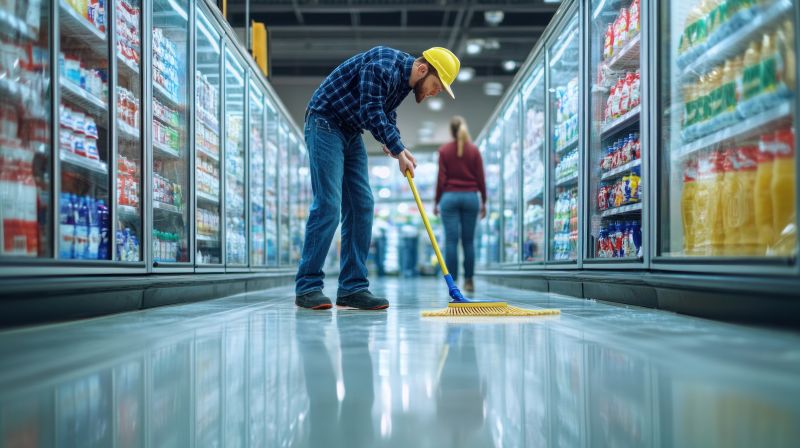
A hygienic supermarket is a successful supermarket. Keep clean to satisfy food safety regulations and provide a comfortable atmosphere.
Equipment to Consider:
- Floor Cleaning Machines
- Sanitizer Dispensers
- Waste Bins
- Mops, Buckets, and Gloves
9. Food Preparation and Kitchen Equipment
In supermarkets that have in-store bakeries, delis, or ready-to-eat cases, food preparation equipment is important. Equipment such as dough mixers, griddles, cold storage counters, and stainless-steel prep tables are needed for operation behind the scenes.
Companies such as Bravo Kitchen provide industrial-strength food service equipment that is widely used in supermarket kitchens and food service areas. These kinds of tools are built to withstand the volume of high-volume, repetitive food preparation.
Note: In non-cooking areas as well, stainless steel sinks and tables provide hygiene and longevity.
Bonus: Equipment Maintenance Tips.
- Schedule periodic servicing of refrigeration and POS systems.
- Train employees on correct equipment usage.
- Have spare parts and tools available for speedy repair.
Frequently Asked Questions
What are the essential equipment items needed to start a supermarket?
A well-equipped supermarket should include display racks, refrigeration units, checkout counters, POS systems, shopping trolleys, storage shelving, security cameras, and cleaning equipment. If the store includes a deli or bakery, food preparation tools like those from Bravo Kitchen may also be required.
How do I choose the right shelving for my supermarket?
Choose shelving based on your product types, store layout, and space. Gondola shelving is ideal for central aisles, while wall-mounted shelves work best for perimeter displays. Opt for adjustable shelves for more flexibility.
Why is refrigeration equipment important in a supermarket?
Refrigeration equipment keeps perishable items like dairy, meat, and frozen products fresh and safe. Proper refrigeration also extends shelf life and reduces product waste, ensuring customer safety and regulatory compliance.
What is a POS system, and why do I need it?
A POS (Point of Sale) system helps manage transactions, inventory, and sales reporting. It streamlines checkout, tracks product performance, and can support customer loyalty programs, making it essential for efficient supermarket operations.
Do I need separate storage for back-end inventory?
A well-organized storage area with heavy-duty racks, pallets, and cold rooms ensures smooth restocking, prevents product loss, and supports staff efficiency.
How can I make the shopping experience better for customers?
Offer clean and well-maintained shopping trolleys and baskets, use clear signage, maintain proper lighting, and ensure fast billing through a reliable POS system. Keeping aisles clutter-free and the environment clean also improves customer satisfaction.
Is it necessary to invest in branded kitchen equipment like Bravo Kitchen?
While brand choice depends on your budget and requirements, many supermarket owners prefer professional-grade equipment from established manufacturers like Bravo Kitchen for food prep areas. These tools offer better durability, hygiene, and performance.
What security systems are recommended for supermarkets?
Install CCTV cameras, anti-theft sensors at entrances, and alarm systems. Security tags and proper lighting also help deter theft and enhance safety for both customers and employees.
How do I maintain supermarket equipment?
Perform regular maintenance checks, clean refrigeration units weekly, train staff on proper usage, and schedule professional servicing for complex equipment like POS systems or kitchen appliances.
Can I expand my equipment later as my supermarket grows?
Many supermarket owners start with essential equipment and upgrade or expand as customer demand increases. Modular shelving, scalable POS software, and mobile prep units make this process easier.


